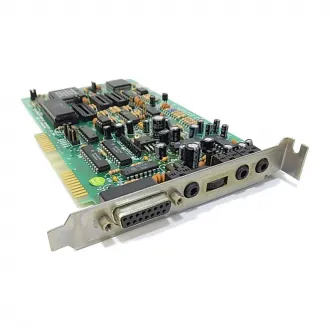The final revision of the original Sound Blaster, the Sound Blaster 2.0 was released in October 1991, CT1350, added support for "auto-init" DMA, which assisted in producing a continuous loop of double-buffered sound output. Similar to version 1.0 and 1.5, it used a 1-channel 8-bit DAC. However, the maximum sampling rate was increased to 44 kHz for playback, and 15 kHz for record. The DSP's MIDI UART was upgraded to full-duplex and offered time stamping features, but was not yet compatible with the MPU-401 interface used by professional MIDI equipment. The Sound Blaster 2.0's PCB-layout used more highly integrated components, both shrinking the board's size and reducing manufacturing cost.
Owners of previous revision Sound Blaster boards could upgrade their board by purchasing the V2.00 DSP chip from Creative Labs, and swapping the older DSP V1.0x with the newer replacement. The upgraded board gained the auto-init DMA and new MIDI capabilities of the Sound Blaster 2.0 but not the expanded sampling rates. The upgrade was necessary for full compatibility with the Windows 3.0 Multimedia Extensions upgrade
